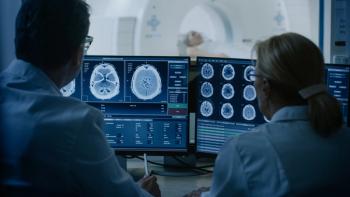
Pharmacists Lead the Way in Evolving CAR T-Cell and Bispecific Antibody Therapy Management

As cellular and bispecific immunotherapies move into earlier treatment lines, pharmacists are interpreting new guidelines, managing toxicities, and shaping patient care strategies.
Recent advances in CAR T-cell and bispecific antibody therapies are redefining treatment paradigms in oncology and expanding pharmacists’ responsibilities along the way.
Ariel D. Dixon, PharmD, BCOP, clinical pharmacy specialist at H. Lee Moffitt Cancer Center in Tampa, Florida, discussed the latest guideline updates, strategies for toxicity management, and the pharmacist’s evolving role in optimizing these complex therapies. From early recognition of immune-related adverse events to long-term monitoring and patient education, Dixon highlights how pharmacists are bridging critical knowledge gaps as these novel immunotherapies move into broader clinical use.
Q: What are the most important updates in recent guidelines regarding CAR T-cell therapies and bispecific antibodies that pharmacists should be aware of?
A: Two major trends define recent updates in cellular and bispecific antibody therapy. First, CAR-T products—particularly BCMA-directed therapies—are moving into earlier lines of treatment, supported by new studies and expanded approvals. Second, there is still uncertainty about how to optimally sequence CAR-T and bispecific antibodies, given their overlapping mechanisms of action and limited comparative data. Updated guidelines (National Comprehensive Cancer Network, the American Society for Transplantation and Cellular Therapy [ASTCT]) now formalize toxicity grading and multidisciplinary management, broadening pharmacists’ roles in patient selection, monitoring, and Risk Evaluation and Mitigation Strategies (REMS) coordination across the treatment continuum.
Q: Are there any clinical pearls you’ve found particularly useful when optimizing immunotherapy regimens for patients?
A: One key pearl is the importance of anticipating and educating both patients and providers about the timing and presentation of immune-related toxicities. These can occur weeks or even months after starting therapy—or even after discontinuation—so reinforcing symptom recognition early is critical.
Q: What role do you see pharmacists playing in bridging knowledge gaps around novel immunotherapies as they enter clinical practice?
A: Pharmacists play a vital role in bridging knowledge gaps as novel immunotherapies enter clinical practice. As CAR-T cell and bispecific therapies continue to move into earlier lines of treatment, pharmacists help translate complex trial data and guideline updates into practice, patient-specific care recommendations. We play a key role in educating the multidisciplinary team on toxicity recognition, grading, and management, as well as manufacturer-specific hold criteria and supportive care strategies. Pharmacists also help develop institutional protocols to ensure standardized management of toxicities and safe transitions between inpatient and outpatient care.
Q: What are some key strategies you use for early recognition of bispecific antibody-related toxicities such as CRS or neurotoxicity?
A: Key strategies for early recognition of bispecific antibody-related toxicities such as cytokine release syndrome (CRS) and immune effector cell-associated neurotoxicity syndrome (ICANS) include structured, frequent monitoring of vital signs and neurologic status, especially during step-up dosing. Standardized grading tools such as the ASTCT criteria help ensure consistent assessment and timely escalation. Clear, treatment-specific protocols and strong interdisciplinary communication among pharmacists, nurses, and providers are essential for rapid recognition and management. Ongoing review of laboratory trends, including C-reactive protein and ferritin, can aid in distinguishing CRS from infection or disease progression. Finally, patient and caregiver education on early warning symptoms supports prompt reporting and early intervention.
Q: Could you share any clinical pearls that help differentiate immunotherapy-related adverse events from other common complications in oncology patients?
A: Immunotherapy-related adverse events (irAEs) often present with autoimmune or inflammatory features, can affect any organ system, and may occur weeks to months after starting therapy, even after discontinuation, unlike the predictable timing of chemotherapy toxicities. Early symptoms such as rash, diarrhea, endocrinopathies, or pneumonitis should prompt consideration of irAEs, especially when multiple organ systems are involved, or symptoms are atypical for infection or disease progression. Diagnosis is primarily one of exclusion, requiring careful evaluation to rule out infection, tumor progression, or other medication effects before attributing symptoms to immunotherapy. irAEs typically respond to immunosuppression (eg, corticosteroids), whereas infectious or malignant complications may not. Patient and caregiver education, multidisciplinary collaboration, and routine monitoring are essential for early recognition and management of these unique toxicities.
Q: As our experience with CAR-T and bispecific therapies expands, what do you anticipate learning over time regarding long-term toxicities and their management?
A: As our experience with CAR T-cell and bispecific antibody therapies continues to grow, the focus is gradually shifting from managing acute toxicities such as CRS and neurotoxicity to understanding and mitigating long-term complications. These include prolonged cytopenias, hypogammaglobulinemia, and recurrent infections, which can persist for months and require ongoing management. With CAR T-cell therapy, we’ve accumulated several years of real-world experience, allowing us to better characterize delayed effects such as secondary malignancies, immune effector cell–associated hemophagocytic lymphohistiocytosis-like syndrome, and late-onset neurotoxicity. In contrast, bispecific antibodies are still relatively new in clinical practice, so our understanding of their chronic toxicities is more limited, though we’re already recognizing patterns of low-grade cytopenias and infections, particularly as these agents move into earlier-line and outpatient use. Pharmacists play an essential and evolving role in this space, overseeing long-term monitoring, infection prophylaxis, immunoglobulin replacement, and patient education that extend well beyond the initial treatment phase.
Newsletter
Stay informed on drug updates, treatment guidelines, and pharmacy practice trends—subscribe to Pharmacy Times for weekly clinical insights.


















































































































































































































